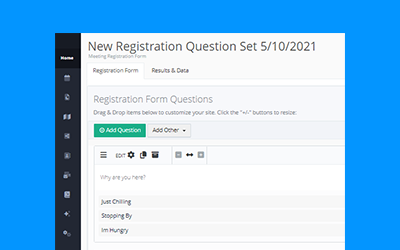Fiscal Policy Analyst, Liz Farmer, Talks Infrastructure, Disadvantaged Communities, and Public Engagement.
Liz Farmer is a fiscal policy expert, national journalist and public speaker who has spent more than 15 years writing about the many ways state and local governments collect and spend taxpayer money. On April 26, Liz will present in the PublicInput webinar titled Strengthening IIJA Grants through Greater Representation and Inclusion.
We caught up with Liz to give an inside peek at the upcoming webinar and to get her take on the Infrastructure Investment Jobs Act (IIJA) and how it will help historically disadvantaged groups in our communities.

Q: Can you provide a quick overview of the IIJA – in particular the discretionary grants available to state and local jurisdictions?
A: The IIJA provides a total of $1.2 trillion in infrastructure funding over five years—about $550 million of it in new money. About 55% of the total funding is in formula grants (mainly DOT) while the rest is discretionary/competitive grant funding. The funding will go toward programs and projects on: transportation, broadband expansion, water/sewer, transit and multi-modal, roads and bridges, and renewable energy.
Q: In what ways will the IIJA help historically disadvantaged groups in our communities?
A: The IIJA focuses a lot of attention to fighting climate change equitably and equity is a key policy issue that’s woven into many of the new funding programs. For example, it includes $1 billion to create the Reconnecting Communities Pilot Program. Among other things, the program funds removing and retrofitting highways that cut through cities, often separating poorer neighborhoods from downtown.
Another program, Healthy Streets, will have up to $500 million over five years in grants for governments and nonprofits to install cool/porous pavements or to plant trees. The goal of the program is to mitigate urban heat effects, reduce stormwater runoff and improve air quality. Among other things, it funds equity assessments for “mapping tree canopy gaps, flood-prone locations, and urban heat island hot spots.”
Q: What are some ways public engagement will play a role in meeting the IIJA grant requirements?
A: Many of the grant programs want applicants to show how they are engaging with the impacted communities before, during and after completion. For example, the RAISE grants (formerly known as TIGER grants) require applicants to do an equity assessment. In addition the White House IIJA guidebook recommends holding stakeholder engagement sessions NOW in preparation for the release of upcoming grants.
Q: On April 26, we are hosting a webinar where you’ll be speaking on IIJA requirements. What do you hope our attendees take away from the discussion?
A: I hope the attendees come away with a few new tools, a deeper understanding of how to approach IIJA funding opportunities, and have an idea of what they’d like to do first to prepare their communities.





